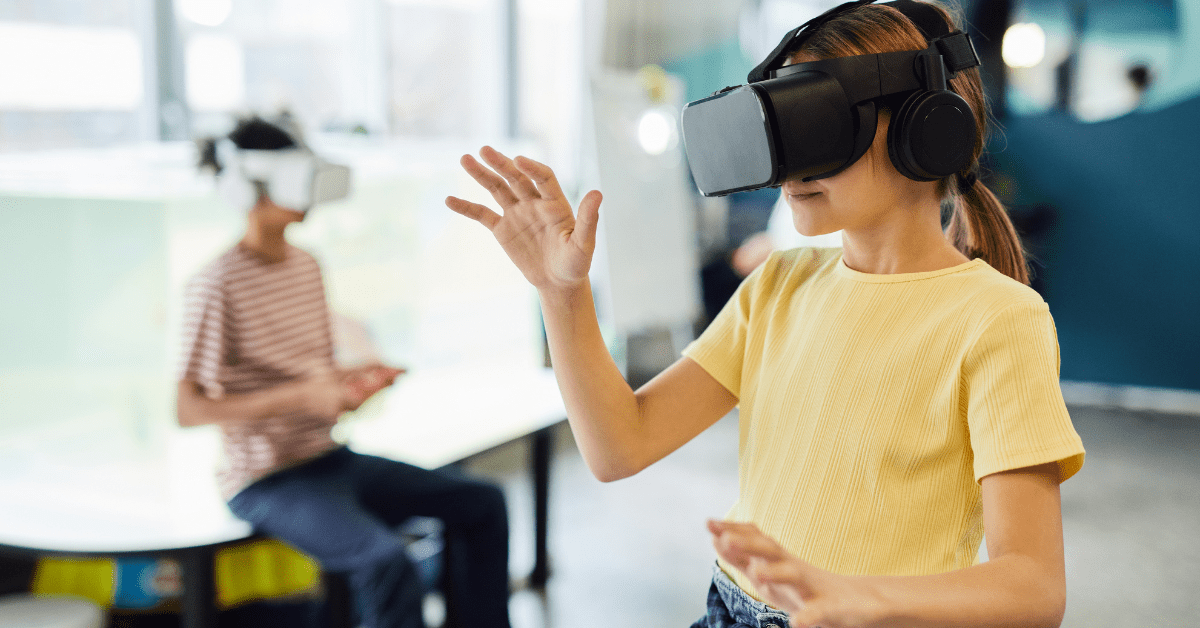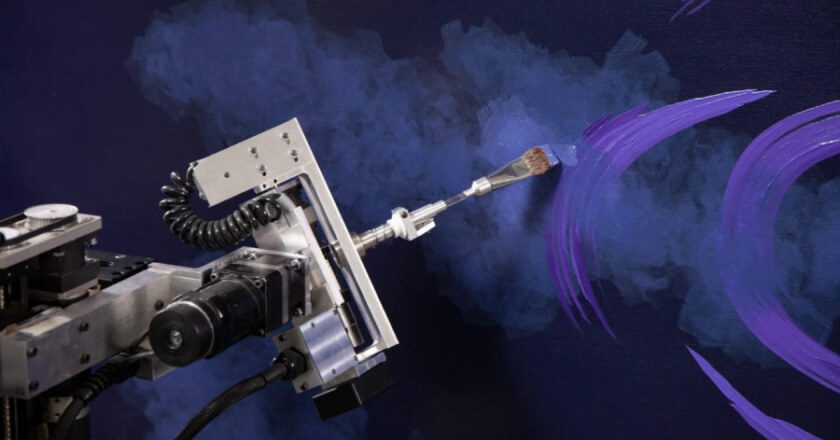Get Inspired
Build the life you love. Learn more about fusioneering:

Posted on February 1, 2024 in AI Technology , Inspiration
Art is made to be experienced. The ideal way to view a painting is up-close and in a way that allows the audience to be present with the work — and while technology and digital advancements are often seen as barriers to “true art viewing,” modern advancements are actually bringing art to the people in more ways than ever before.
Technology’s integration into art exhibitions isn’t merely about innovation for the sake of novelty, it aims to bridge gaps, democratize access, and enrich the art-viewing experience. Virtual art exhibitions stand as testament to this evolution, enabling people worldwide to transcend geographical and physical barriers to explore art collections from the comfort of their homes. The integration of high-resolution imagery, interactive elements, and AI-driven guidance has transformed how art today is accessed and understood.
Ready to see how technology is reshaping the world of art exhibitions?
Related: See Dulcinea the Painting Robot’s Online Art Gallery
Virtual galleries are immersive digital spaces that replicate the gallery experience in a virtual environment accessible through the internet. These platforms can offer either fully-immersive, three-dimensional virtual reality tours of art spaces, or enhanced two-dimensional experiences with a suite of features. Virtual galleries offer unprecedented access to art collections and exhibitions regardless of geographical constraints. Notable examples include:
Google Arts & Culture: A platform providing virtual access to numerous art institutions worldwide, offering high-resolution images of artworks and curated exhibitions. It utilizes technologies like “Art Camera” to capture artwork details in ultra-high resolution, allowing viewers to appreciate intricate brushstrokes and fine details remotely. The app can also be used with VR setups, allowing users to virtually interact with paintings and view the textural topography of the paint in three dimensions.
Museum of Modern Art (MoMA) Virtual Views: MoMA recently launched Virtual Views, allowing audiences to explore their collections and special exhibitions from anywhere in the world. The platform integrates multimedia elements, including videos, audio guides, and interactive components, enhancing the immersive experience for online visitors.
The Louvre Museum Online Tours: The Louvre offers virtual tours of its iconic galleries and exhibitions, enabling users to navigate through its vast collection remotely. Utilizing 360-degree panoramic views, users can explore different sections of the museum as if they were there, including the famous Mona Lisa and Venus de Milo.
Related: How Artificial Intelligence is Making Art Restoration Easier
New AI-driven systems have been designed to interact with and inform audiences in art museums and galleries. These systems are equipped with sensors, cameras, and AI algorithms to perform various tasks and better engage visitors within the gallery space. Examples include:
Pepper at the Smithsonian: Pepper units — four-foot-tall humanoid robots, featuring faces and playful expressions — were recently employed in six Smithsonian spaces to engage visitors and provide information about the exhibits. The Pepper robots used motion sensors to become alerted when guests approached, and utilized natural language processing to answer questions and engage in conversations with visitors, enhancing their museum experience. The Smithsonain hopes to continue using the Pepper units — donated by Softbank Robotics — to orient visitors, educate them about artworks and artifacts on display, and help draw attention to under-attended galleries.
Gallery One at the Cleveland Museum of Art: This interactive, 13,000-square-foot gallery space features touchscreen displays and technology-driven experiences that offer visitors deeper insights into artworks as part of an innovative fusion of science and art. Using responsive displays and interactive applications, visitors can explore curated content and related information about all of the artworks on display at the Cleveland Museum of Art. Guests of the museum can see artworks in their original locations, learn about the historical context of a work, and engage in interactive games that bring them closer to the art — such as summoning forth paintings that match their current facial expression, or creating digital paintings for other guests to interact with.
Read More: 5 AI Advancements to Expect in the Next 10 Years
Innovations in virtual galleries and AI programs democratize art by breaking barriers of accessibility and enhancing visitor experiences. They offer opportunities for enhanced educational engagement and enable a broader audience to appreciate art regardless of physical location or mobility limitations.
As technology continues to advance, the integration of augmented reality, virtual reality, and AI tools in art exhibitions holds immense potential. There may even be an immersive, virtual gallery experience coming from a certain painting robot — but that’s a story for another time…
Can’t wait for all the incredible things in store for the future of The Kirby Foundation? Follow our Instagram, Facebook, Pinterest, and newsletter to make sure you stay in the know!
Are you interested in hearing the complete story of Paul and Dulcinea? Watch the video (nominated for Best Short Film at the 2021 Vail and Portland Film Festivals) for more info.
Want to be the first to know about every exciting new project at the Kirby Foundation?
Join Our Mailing ListBuild the life you love. Learn more about fusioneering:
Why pick which passion you should follow? Fusioneering allows you to cultivate many interests into something innovative and revolutionary.

Meet Paul and explore how blending your interests can empower you to follow your enthusiasm and bring your passions to life.